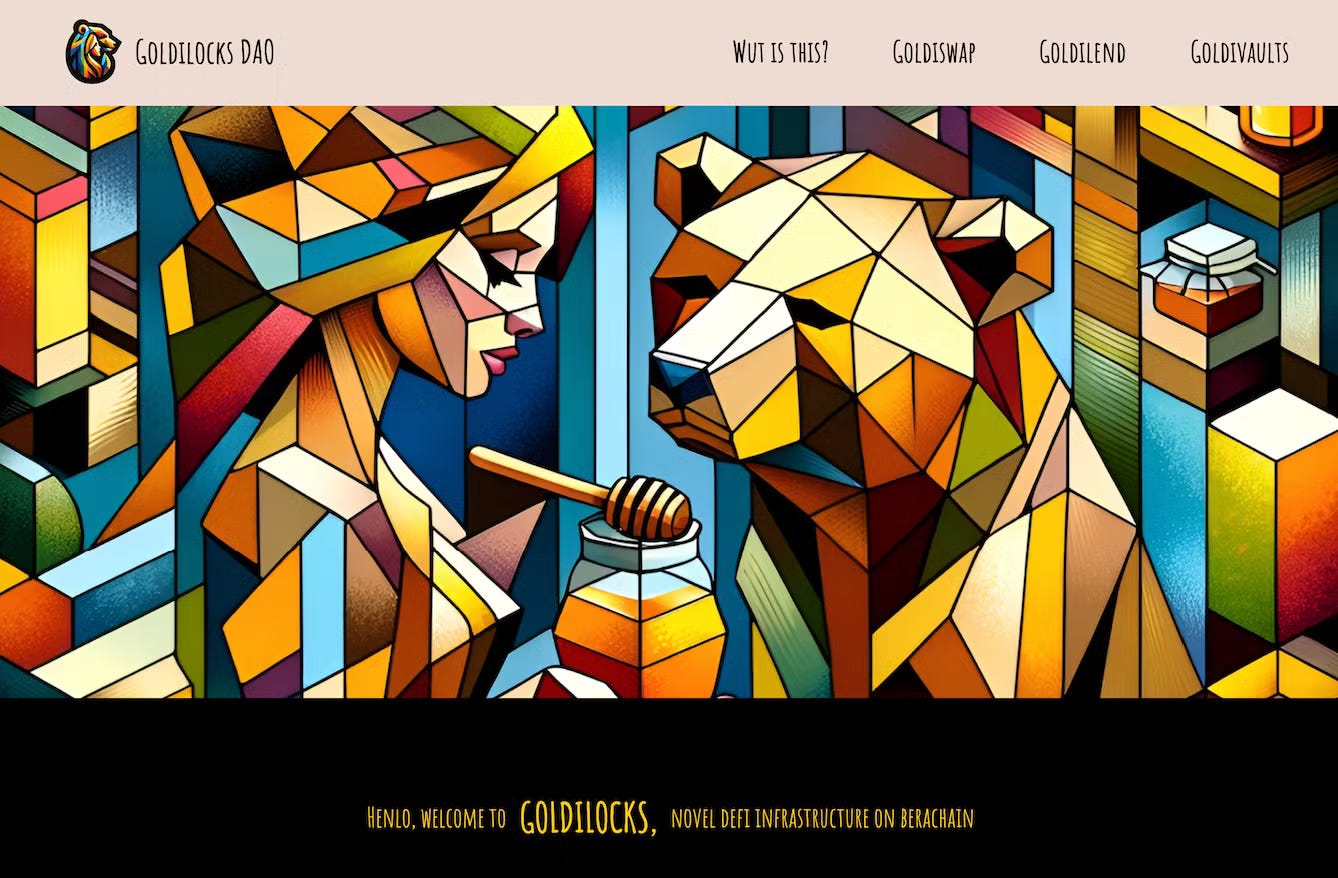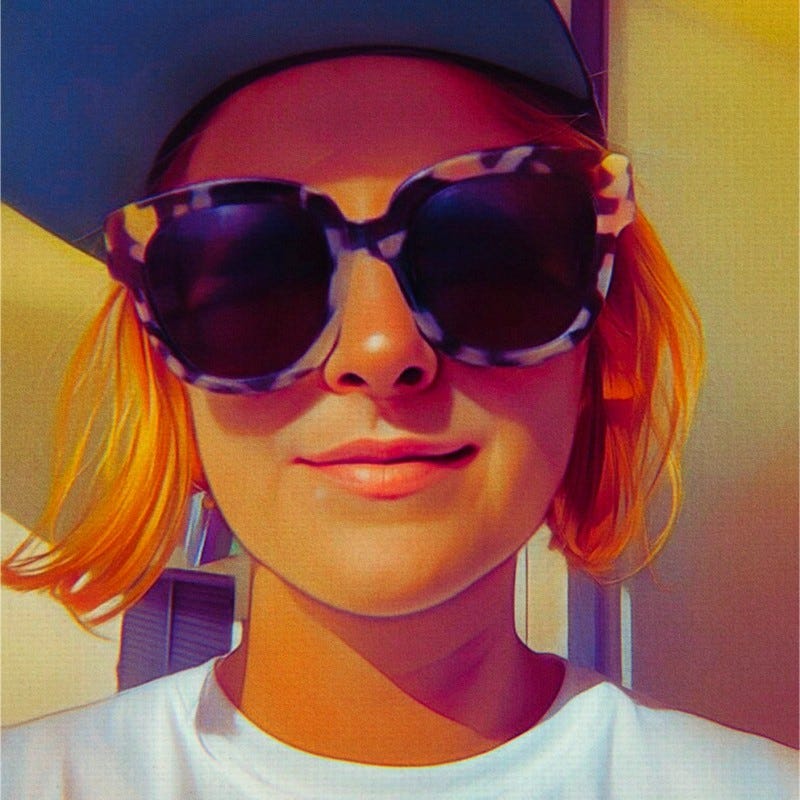Today's Agenda...
5 essentials for building a standout Web3 brand that captures attention and thrives in a fast-paced, creative landscape 🚀🎨
Explore Ireland’s landscape for crypto ventures 💼 🌐
⏰ Reading Time: 10 min
Join the Web3 Leaders Community
5 things to keep in mind when building a sick brand in web3
This article was written by Radina Galabova.
Web3 is constantly evolving, at lightning speed. From my decade-long experience in digital advertising, I call it “social on steroids”. With new projects, chains, d’apps launching daily, it can be hard to stand out in the crowd (of copycats) and even harder to stick in someone’s mind and keep them from getting distracted by new rabbit holes and hyped up projects.
Whether you’re launching a DeFi protocol, an NFT project, or a DAO, standing out requires more than just a shiny logo and a funny tagline, or a cute mascot. You need creativity, strategy, and community engagement to make it successful.
In this article, I’ll highlight examples of real projects I’ve worked on to demonstrate how you can build a memorable and meaningful brand in the wild world of web3.
1. Wow Factor
Are the visuals epic? Do they stop the scroll? Do they make people say, “oh sh*t, that’s cool”?
Your brand needs a visual style that’s different, unique, and impossible to ignore. Degens want to be excited; they’re thirsty for the next big thing to sink their teeth into. Is your project just another cute PFP character that we’ve seen a thousand times? Or is it something that makes people say, “WTF is that?”, in a good way.
When I worked on Goldilocks DAO’s rebrand (“a novel DeFi infrastructure on Berachain“) we explored a few different creative styles, and what stood out the most was this impressive stained-glass effect. It had the perfect “show me the honey” energy we were after.
Takeaway: When defining the visual style of your brand, make sure it feels fresh, memorable, and distinctive. And true to what the brand vibe is, for Goldilocks, it was about being epic, and legendary.

2. Community Engagement
Does your brand have “legs" and something your fans can run with, and have fun with?
In web3, community is your most important asset. Your community helps you grow your brand (and the business). If they don’t connect with it, they won’t engage or build on it. This is true for brands beyond web3, too.
At SO-COL (a SocialFi platform for creators), I made a small but pivotal change to the brand by tweaking the spelling from “Socol” to “SO-COL,” creating a stronger link to the origin of the name, “social collectibles”, which then made way for a great brand framework for comms moving forward. The community loved it so much they started creating their own SO-puns in the chats, and on the custom Telegram stickers we created. One colleague came up with “SO-SAXY” for their custom sticker, which became a hit in our internal company chats.
Takeaway: Your brand should inspire people to make it their own. Engaged fans will help your brand thrive.

3. Leverage AI Tools
Can AI help you create branded assets to keep up with the fast paced nature of web3?
Web3 moves fast—constant innovation, global teams, and time zones that blur into one, from GM to GN. You need to churn out engaging content all the time, often on a tight budget. So why not leverage the AI tools at your fingertips?
When I worked on the rebrand for Goldilocks, the client specifically wanted to use AI for the visuals. I set the art direction with the stained glass effect and used AI to generate a bank of assets the team could reuse for future content. I also gave them the prompt I used (and how to tweak it) so they could create more on-brand content on their own, from their Discord PFPs to special event visuals.
Takeaway: AI is a great tool to keep things fresh and efficient, just remember that having a human creative lead is still key to ensuring it all works cohesively with the rest of your brand style and messaging across all platforms and touch points.

4. Meme Factor
Can your brand become a meme and actually be funny (not cringe)?
Like I said before, web3 branding and comms is like social media on steroids - memes are a critical part of the culture even more so here. A good meme can make your brand viral, while a bad one can fall flat (or worse, get labelled cringe). Degens love irony and self-deprecating humour, and now we live in a world where meme coins are taken as seriously as stable coins — ironic and a meme in itself.
With the help of Dall-E, we created hundreds of images for Goldilocks DAO. Some anomalies became meme-worthy, legendary assets that were repurposed for things like the error page/missing (soon-to-be-launched) product on the site:

Takeaway: Find a way to have fun with the brand and create memes that don’t feel awkward; lean on your community to build that with you, they often have some of the best ideas on how to have fun with your brand but it’s on you to set a strong foundation to create the space for that to occur organically. I.e. A fun brand that doesn’t take itself too seriously is key.
5. Sticker-ability / Gif-ability
How easily does your brand translate into stickers or GIFs?
If you’re a brand in web3, a sticker pack is a must. Whether it’s Telegram or Discord, stickers are the unofficial language of your community. They let fans express themselves and represent your brand in a playful, visual way, that resonates with them and creates culture.
I created sticker packs during my time at SO-COL and Apricot Finance (a Solana-based DeFi project). For Apricot, I discovered that raccoons love apricots, so we created a raccoon character as part of the pack that represented hodlers and token collectors. The stickers were simple, fun, and brought the community together. The racoon was used a lot internally too.
Takeaway: If your brand translates well into stickers and GIFs, it will naturally spread as people will start to use it in daily communications, increasing visibility and impact. Sometimes, stickers are how people first discover your project.
Well, that’s my take on what makes an impactful web3 brand. Hope that gave you some good food for thought when building your next big project.
And if you’re looking for support to take your project to the next level and need help with brand building, hit me up. I’m always open for collabs with interesting people in the space.
About the author:
Radina Galabova is a Brand Creative Director with over 13 years of experience in global brand strategy and digital advertising. For the past 3 years, she’s focused on building impactful web3 brands, working closely with founding teams in SocialFi, DeFi, NSFW3 and beyond. Check out her work on radina.space 🛸 ✨
Cryptocurrency Market Evolution in Ireland: Opportunities, Obligations and How to Get Started 🇮🇪
This article was written by BlockReg Advisors, a crypto regulatory consulting firm.
Ireland has been steadily evolving its cryptocurrency regulatory framework, positioning itself as a promising player in the global crypto landscape. The country offers a supportive business environment for cryptocurrency entrepreneurs and businesses, thanks to its strategic EU membership, skilled workforce, and growing fintech ecosystem. This article explores the opportunities and obligations involved in establishing a cryptocurrency business in Ireland and provides guidance on how to get started.
Advantages of Registering
Well-Defined Regulatory Framework : Ireland is moving toward creating a comprehensive legal structure for cryptocurrency activities. The European Union’s Markets in Crypto Assets (MiCA) regulation, which Ireland is adopting, provides guidelines to govern cryptocurrency operations and activities within the EU, ensuring businesses operate within a clear legal environment. In response to its public consultation on Member State discretions within MiCAR, the Department of Finance stated in its feedback that Virtual Asset Service Providers (VASPs) operating in Ireland under existing laws before December 30, 2024, will have a transitional period capped at 12 months.
Ireland’s Central Bank is also committed to enforcing Anti-Money Laundering (AML) and Countering the Financing of Terrorism (CFT) regulations for cryptocurrency businesses.
Competitive corporate tax rates:
Low corporate tax rate: Ireland’s 12.5% corporate tax rate is among the most competitive in Europe.
Innovation Incentives: Startups may also benefit from the Research & Development (R&D) tax credit of up to 25%, aimed at fostering innovation.
Double Tax Treaties: Ireland’s vast network of tax treaties with over 70 countries allows for favorable international business arrangements.
Constraints and Obligations:
Regulatory Compliance: Businesses operating in Ireland must adhere to the EU’s MiCA regulatory framework. Additional obligations include compliance with local AML and CFT regulations, enforced by the Central Bank of Ireland (CBI). This requires regular audits, risk management practices, and thorough KYC (Know Your Customer) procedures.
Documentation Requirements: Similar to other EU countries, Ireland has stringent documentation standards. Companies must provide:
Certified identification: Copies of passports and proof of address for all company directors and shareholders.
Business plan: A comprehensive description of the business model and financial projections.
AML/KYC policies: Procedures showing compliance with the regulatory standards set by the CBI.
Financial Obligations:
Company Registration Fee: Starting at around €50 for initial registration with the Companies Registration Office (CRO).
Annual Filing Fee: Typically around €20 for annual filings with the CRO.
License Fees: The exact fees will vary based on the scope of the business and applicable licensing under EU MiCA regulations.
How to Get Started in 4 Steps:
Company Formation: Start by choosing a company name and registering your business through the Companies Registration Office (CRO). You must have at least one director and one shareholder, and comply with Irish corporate governance laws.
Documentation Preparation: Collect and prepare all required documentation, including identification documents, proof of address, a detailed business plan, and financial statements. Ensure that the documents align with the requirements set by the Central Bank of Ireland (CBI).
Licensing Application: Submit your cryptocurrency license application through the CBI, ensuring compliance with the MiCA regulation. You’ll need to demonstrate robust AML and KYC processes to ensure regulatory adherence.
Initiating Operations: Once your business is registered and licensed, you can begin operations. Ensure that you have strong internal controls in place and appoint a compliance officer responsible for adhering to AML and CFT regulations, as well as managing regulatory reporting.
Ireland offers a strong business environment for cryptocurrency ventures with its competitive tax regime, access to the EU market, and evolving regulatory framework. While the regulatory landscape may present challenges, navigating through it successfully can provide businesses with significant opportunities for growth. With Ireland becoming an increasingly attractive destination for fintech and blockchain enterprises, setting up a crypto business here may yield long-term success.
Collaborating with crypto regulatory consulting firms like BlockReg Advisors can yield numerous advantages and ensure that the company is well-prepared for triumph in the dynamic and swiftly evolving crypto market. This partnership can safeguard the company's reputation, financial stability and cybersecurity while positioning it for success in the crypto industry.
For more information contact :
If you like our work, feel free to like and comment.
Follow us on Linkedin to keep up with all our news.
Disclaimer : The goal of this newsletter is to inform and produce content related to management in the world of Web3. It is not investment advice. Investments in crypto-assets and NFTs are risky and can result in the loss of your entire capital. Always conduct your own research and exercise caution.






